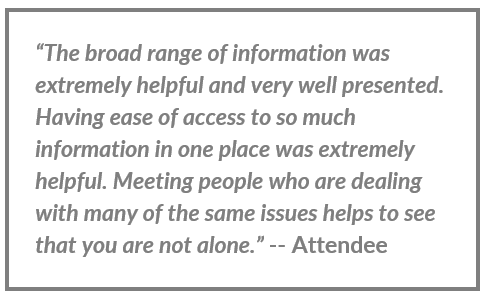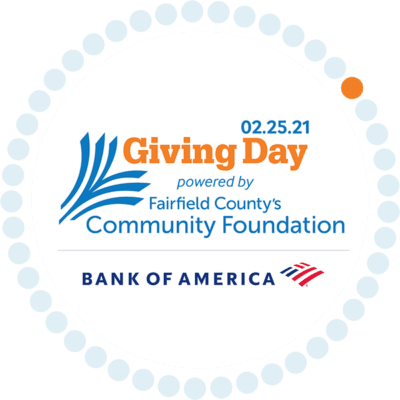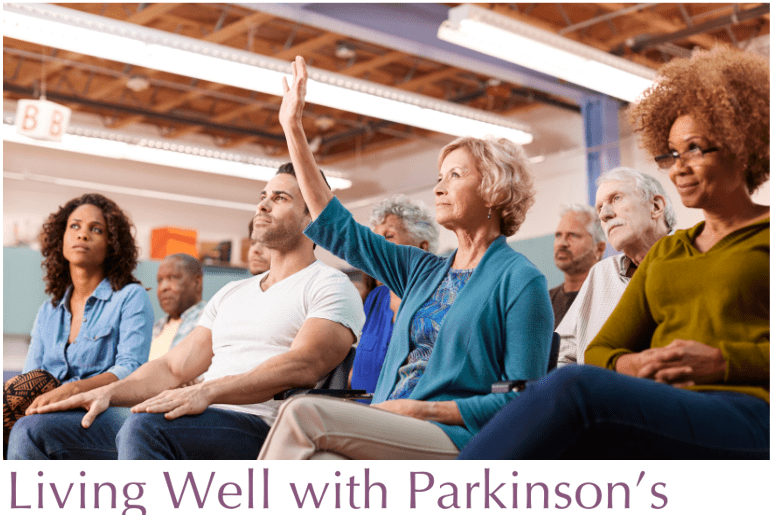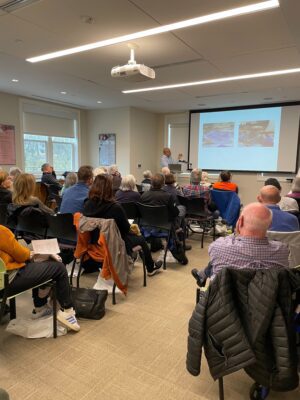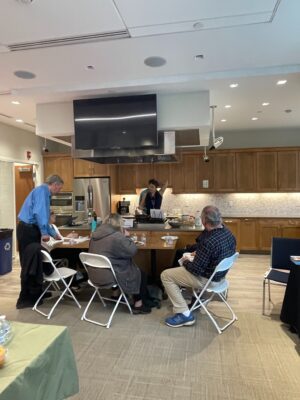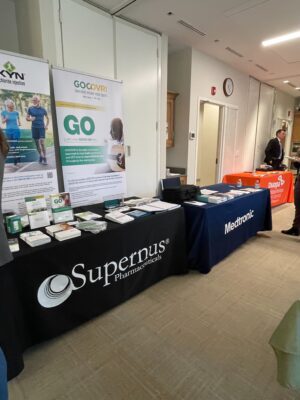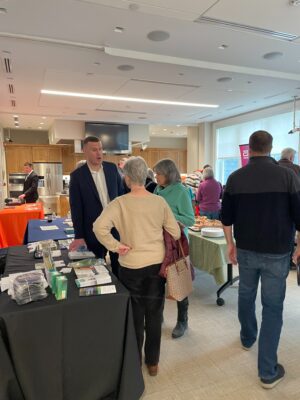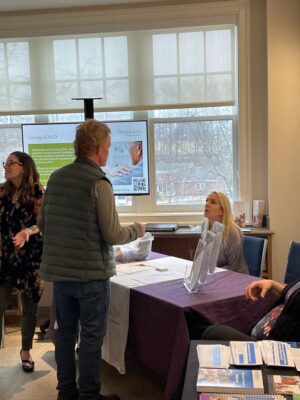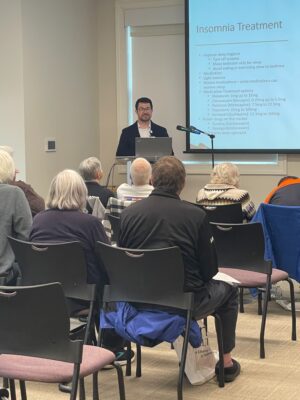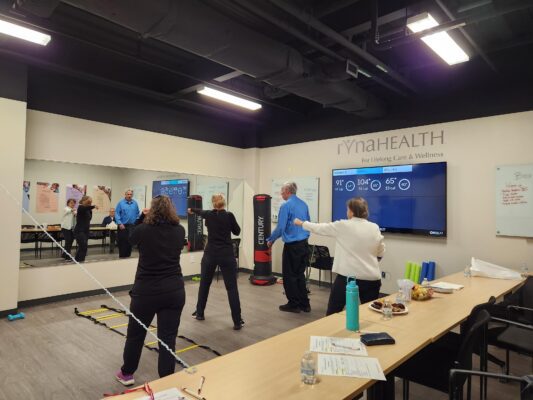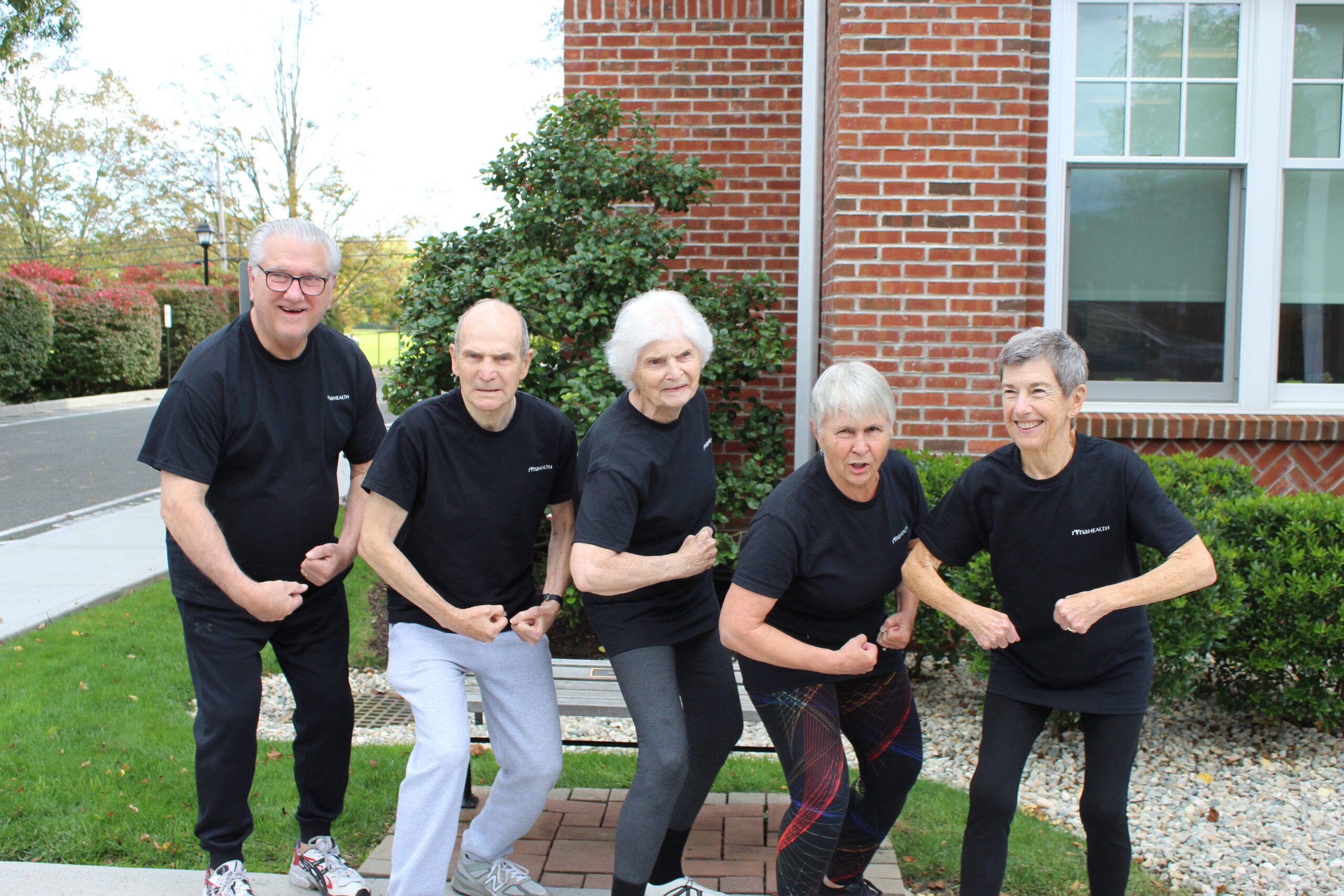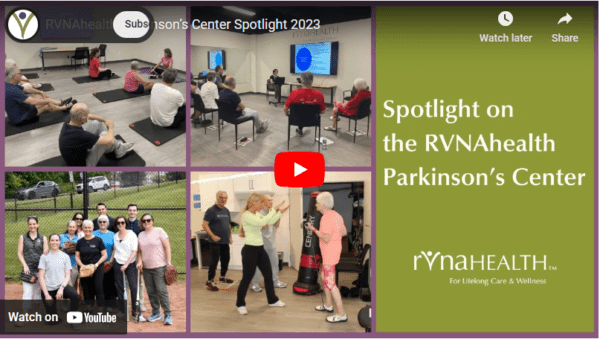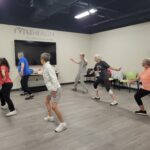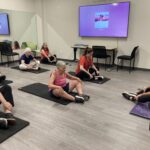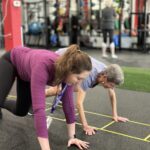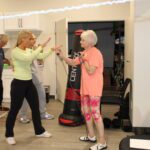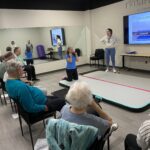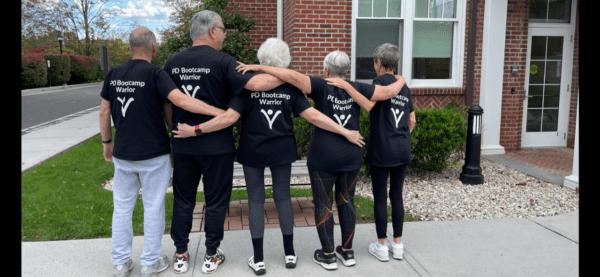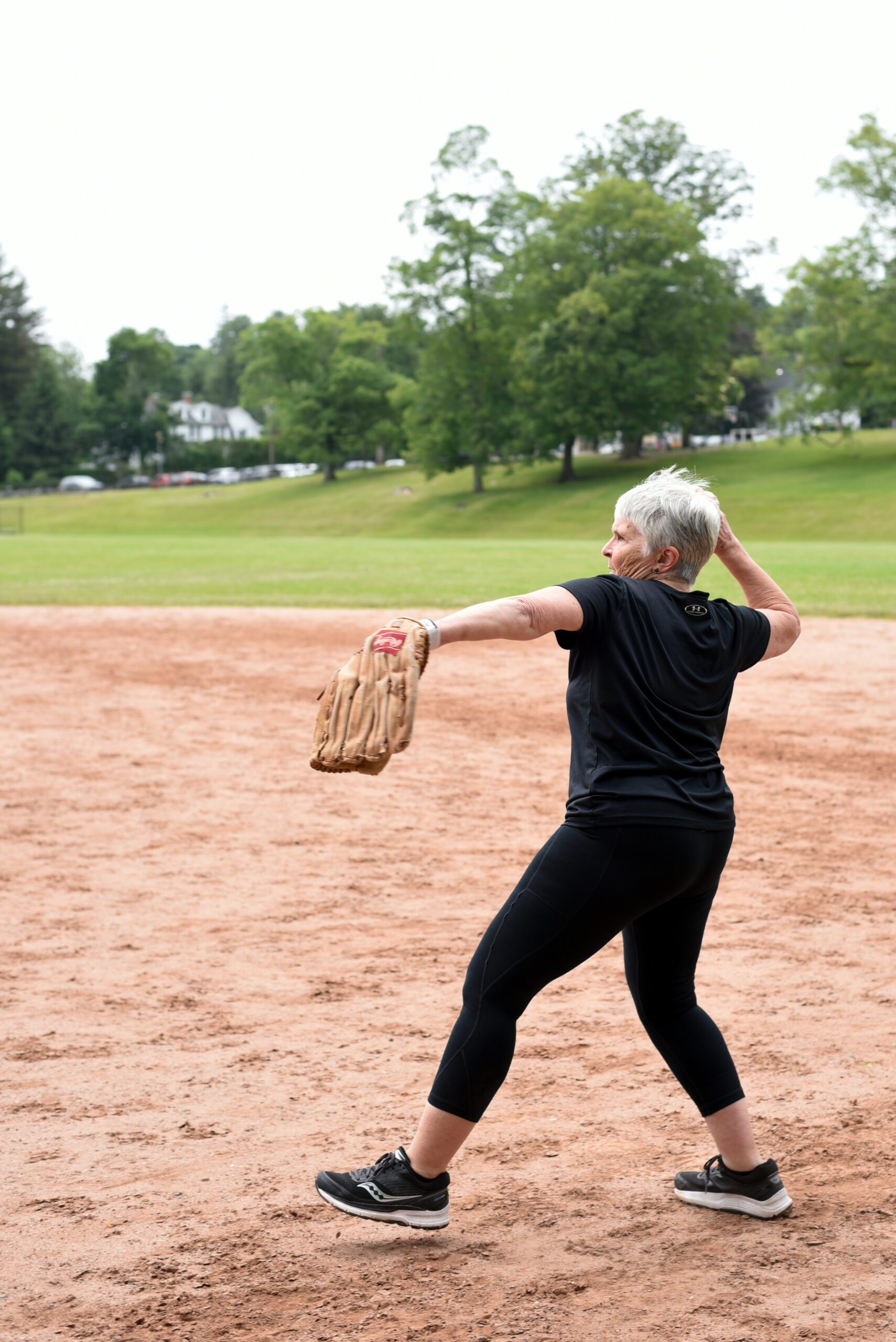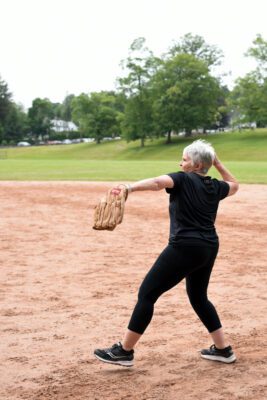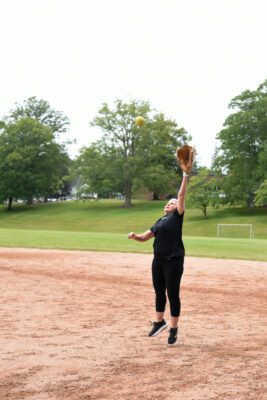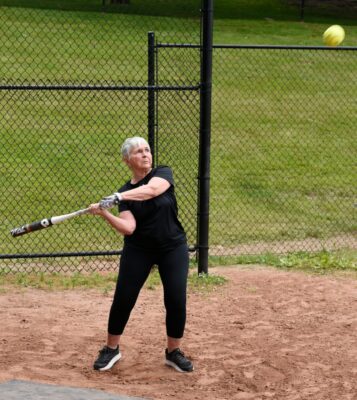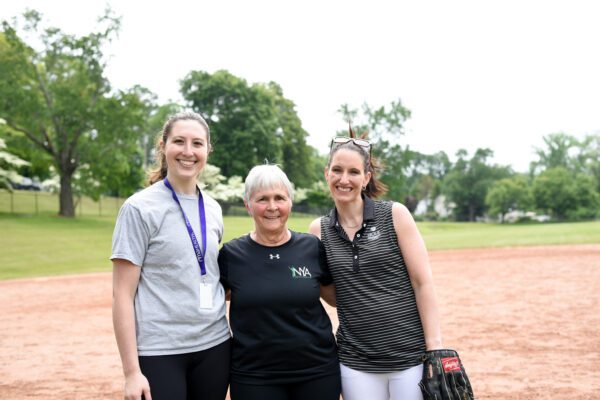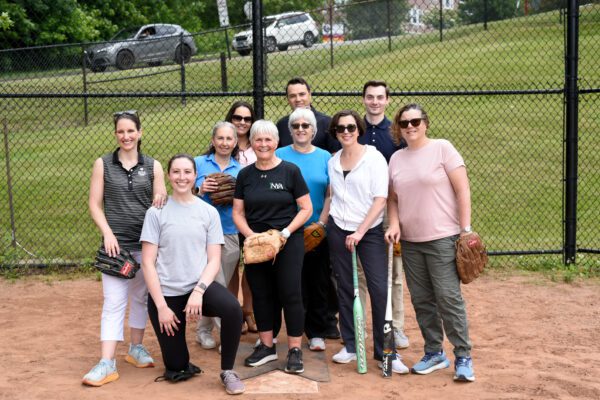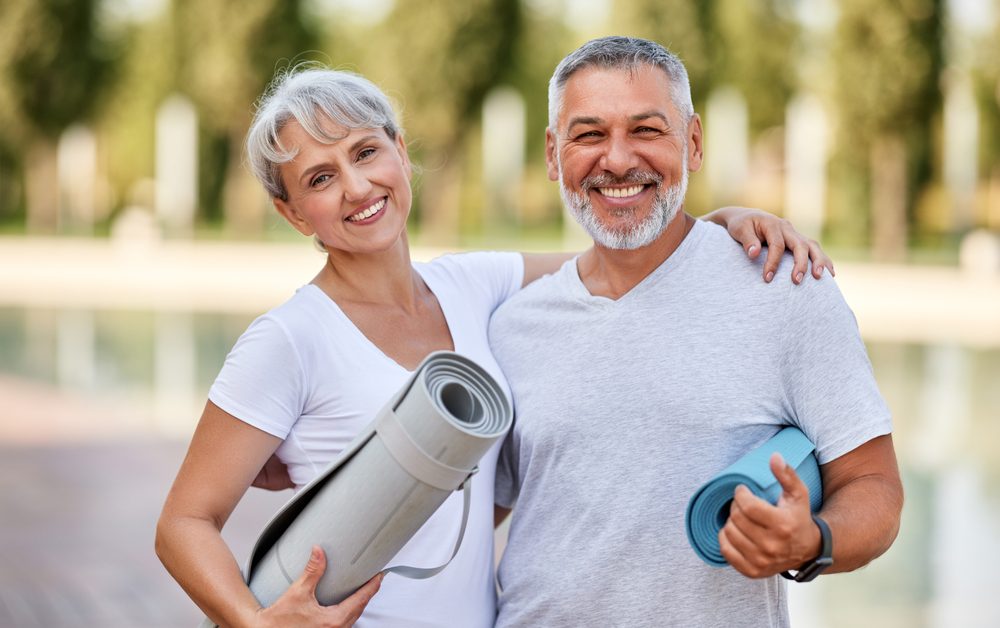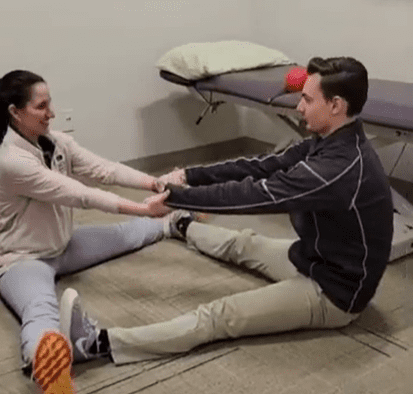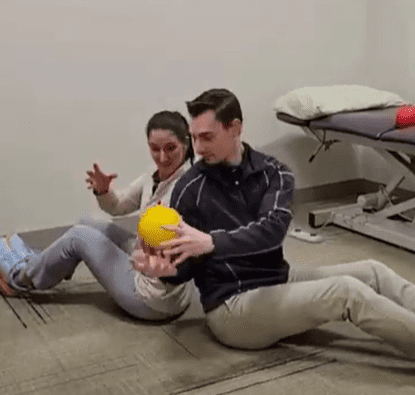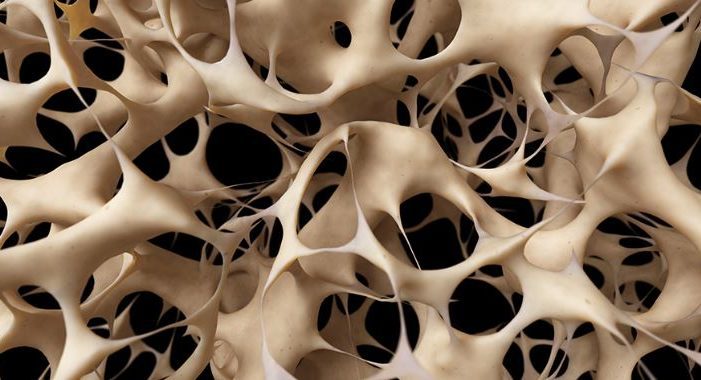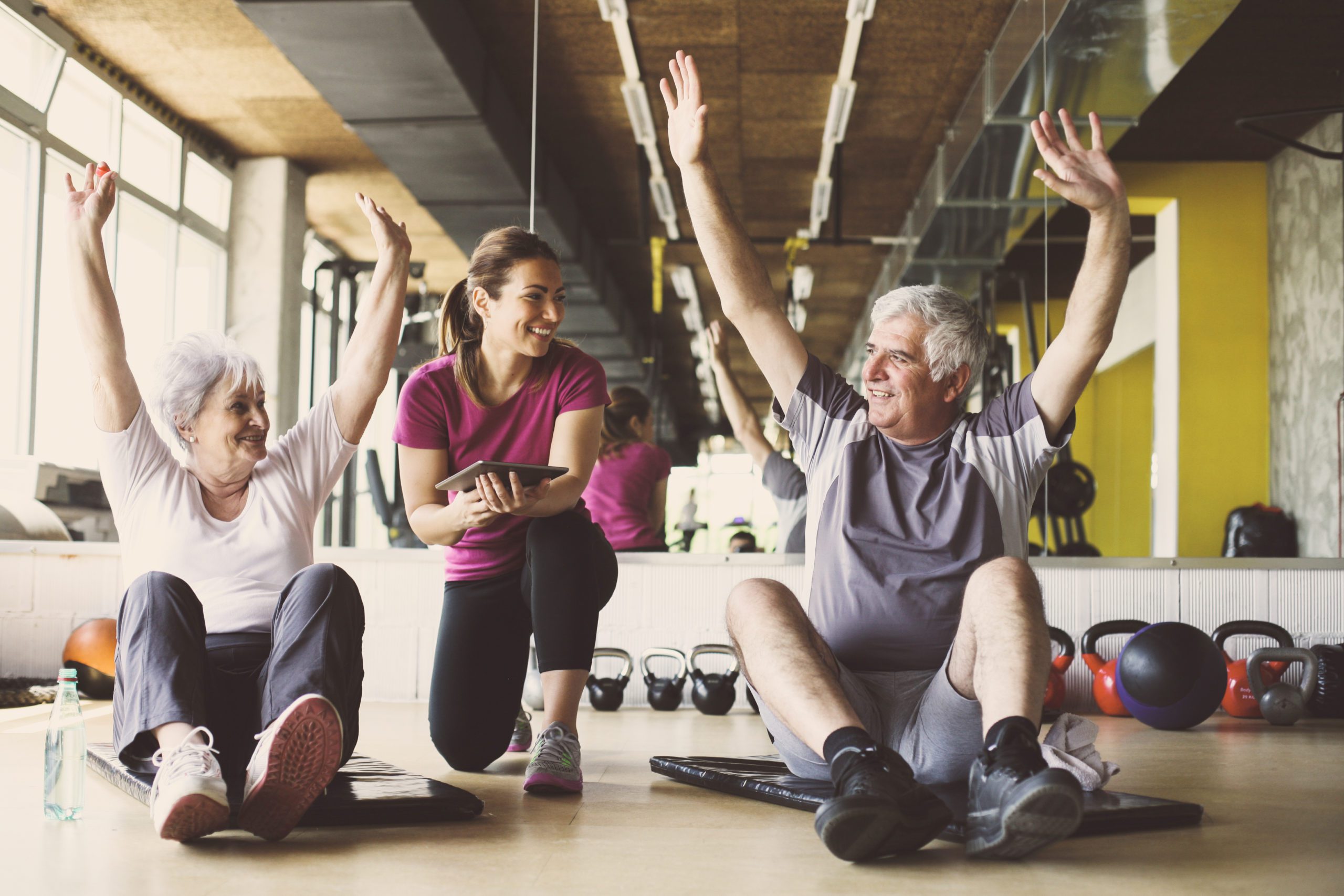Approximately 1 million people in the U.S. are currently living with Parkinson’s Disease (PD), with 60,000 new cases diagnosed each year. Chances are you know someone with this degenerative condition. RVNAhealth Physical Therapist, and Outpatient Practice Manager, Kate Campbell, PT, DPT, SCS, Cert. MDT, CSCS, LSVT BIG is on a mission to spread the word about Parkinson’s treatment and early intervention techniques. “Many PD-diagnosed patients are not aware that exercise and physical activity can have tremendous positive impact on the symptoms and progress of Parkinson’s Disease,” says Campbell.
The Parkinson’s Foundation, along with the American College of Sports Medicine (ACSM), recently published an updated recommendation for exercise and physical activity for those diagnosed with Parkinson’s. This recommendation includes exercise frequency, intensity, time, type, volume, and progression of exercises that are safe and effective. Its suggested activities span across aerobic activity, strength training, stretching, and balance, agility, and multitasking. It also recommends starting any physical activity program with a visit to a physical therapist specializing in Parkinson’s!
“RVNAhealth has invested in research-backed certifications and rehabilitation therapy and exercise programs for those affected by PD,” says Campbell. “We want people diagnosed with Parkinson’s to understand there are proactive steps they can take, within their control, to help slow the progression of the disease. An RVNAhealth Parkinson’s-specialized therapist can help customize and layout those recommended steps.”
RVNAhealth therapists are certified in LSVT BIG and LSVT LOUD – research-based, gold standard programs used in the evaluation and treatment of people with Parkinson’s. In addition to offering home-health treatment programs, we also offer treatment and exercise programs at our Ridgefield-based Rehabilitation & Wellness Center. “In alignment with the Parkinson’s Foundation and ACSM exercise recommendations, RVNAhealth offers many types of programs that can benefit anyone affected by PD. Our weekly classes are open to anyone in the public that would like to register and drop in for a class. While we encourage anyone with PD to engage in healthy, stage-appropriate exercise routines, we really want to spread the word to encourage individuals to start a routine early and often following a PD diagnosis,” says Campbell.
More information about RVNAhealth’s Parkinson’s programs, please visit our website or contact us at 203.438.7862 or rehab@rvnahealth.org.
Learn More About Our Current Ongoing Class Offerings Open To The Public:
Balance and Beyond – Every Tuesday & Thursday, 12 – 1pm. An ongoing drop-in class (come for one or come for all!) that focuses on building muscle, restoring balance, and improving your walk or jog, all while giving your brain a great workout! Location: RVNAhealth Rehabilitation & Wellness Center, 27 Governor Street, Ridgefield. Register here to attend. Nominal fee for each class.
Strength & Beyond – Every Tuesday & Thursday, 1 – 2pm. An ongoing drop-in class (come for one or come for all!) that focuses on building muscle and bones, improving cardiovascular fitness, flexibility and beyond! Location: RVNAhealth Rehabilitation & Wellness Center, 27 Governor Street, Ridgefield. Register here to attend. Nominal fee for each class.
Living BIG – Ongoing weekly drop-in class. Living BIG addresses the problem of patients’ movements becoming smaller and more tentative as Parkinson’s Disease progresses. Each class, the therapist takes the patient through a series of whole-body LSVT BIG exercises aimed at improving strength, balance, flexibility, and coordination. Exercises are all exaggerated to reinforce that the patient needs to make his or her movements bigger. Location: RVNAhealth Rehabilitation & Wellness Center, 27 Governor Street, Ridgefield. Email RehabCenter@rvnahealth.org to sign up. Nominal fee for each class.
Living LOUD – Ongoing weekly drop-in class. Living LOUD tackles the soft voice, mumbled speech, monotone speech and hoarse voice that often afflict Parkinson’s patients. Structured activities that work the patient’s vocal range teach them to increase volume without straining their voices. In each session, the therapist takes the class through a series of rigorous vocal exercises that alternate between loud and soft. Location: RVNAhealth Rehabilitation & Wellness Center, 27 Governor Street, Ridgefield. Email RehabCenter@rvnahealth.org to sign up. Nominal fee for each class.
